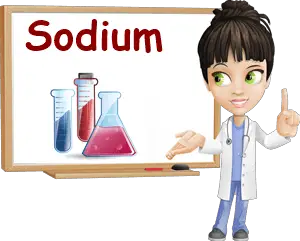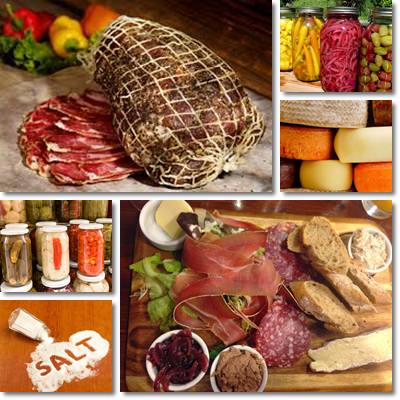As a trace element with great influence on our health and general well-being, sodium is by far the most controversial subject when it comes to keeping in good health. While it is important to consume sodium on a daily basis, too much can be extremely harmful and pose serious health risks in the long run. A moderate consumption of sodium can help regulate body fluids, improve glucose absorption and support heart activity. Exceeding daily recommended intakes can lead to cardiovascular problems such as high blood pressure or stroke.
Sodium is a general term commonly used for designating table salt. However, it is really a chemical element with a wide range of uses. It is used to make soap, salt, drying and deicing agents, glass, dyes, bleach, as food preservative and so on. Table salt is actually called sodium chloride because it is half sodium, half chlorine. Despite being blamed for a myriad of health problems, sodium is actually good for us, but in limited amounts.

Is sodium good for you?
Yes, there are important health benefits to sodium consumption. For example, getting enough sodium improves glucose absorption and regulates body fluids, blood pressure and blood volume. In addition to this, sodium helps create a good environment for electric impulses from nerves to pass onto tissues. A limited consumption of the mineral is sure to keep the body in good shape and great health.
But what most people don’t know is that sodium is already found naturally in most foods from fruits and vegetables to nuts, grains, dairy and meat. We could easily meet our daily requirements of sodium without having to salt our food or eat anything processed because it’s processed food and table salt that trick us into having a too high a intake of the mineral than we actually need.
How much sodium a day?
The recommended daily intake of sodium for an average person is between 500-1,500 mg. A tolerable upper intake is of about 2,300 mg per day, but this too may pose some health risks because it’s still an amount higher than the one estimated we need. People over 40, diabetics, children and people suffering from kidney problems, high blood pressure or any other form of cardiovascular disease should limit their sodium intake to 1,500 mg a day.

Side effects of too much sodium
A high sodium intake causes fluid retention in the body and will increase blood volume which will lead to high blood pressure and, over time, cardiovascular disease and associated cardiovascular events such as stroke or heart attack. According to statistics worldwide, high blood pressure and stroke are two of the leading causes of death. Other unpleasant effects of a too high a sodium intake include water retention with swelling, and weight gain in the form of water weight.
Excess sodium in the diet can potentially cause skin issues, for example make skin appearance worse, especially skin affected by cellulite. Too much sodium can cause excess fluid in the brain, even coma, but also an overall low quality of life with side effects such as dizziness, lightheadedness, headaches, nosebleeds, flushing etc.
Side effects of sodium deficiency
Too little sodium in one’s diet can pose health problems as well. Signs and symptoms of sodium deficiency include:
- a general state of weakness
- lethargy
- drowsiness and confusion
- dizziness as a result of low blood pressure
- unintentional weight loss
- diarrhea, vomiting
- headaches
- poor coordination
A sodium deficit can have negative effects on muscle coordination because sodium is needed for transmitting electric impulses from nerves to muscles throughout the body, heart included. As you can see, the mineral is of crucial importance for the good functioning of both the nervous and the cardiovascular system.
How to maintain sodium balance?
How do we maintain a balanced sodium intake? This is a truly difficult task especially for people in love with processed foods. While adding a pinch of salt to half a plate of delicious steamed broccoli with sour cream and garlic topping is ok, drinking two cans of soda and eating one bag of chips can supply you with more sodium than necessary for the entire day in one meal.
How come, you ask? It turns out that sodium is added (in fairly large amounts) not only to chips, but also in sodas, doughnuts, pizza, canned soup and all that is sweet and salty, from popcorn to candy. Let’s not get started with restaurant food or traditional home-cooked meals based on old family recipes which can employ wild amounts of salt to give the food a good taste. As delicious as some foods or dishes may taste, their high sodium (or salt) content should be a deal-breaker and deter anyone from eating.
Try cooking your own food, add less salt to it, include more vegetables and fruits in your diet, eat more natural and less processed and you will surely manage to keep your sodium intake within normal limits. From my experience, it only takes a few weeks for anyone to learn to appreciate how good food really tastes without salt and literally start craving healthier food. Bananas, potatoes, spinach, papaya, lentils and beans are all great sources of potassium. By including them in your diet you can limit the side effects of a high sodium intake, though reducing intake in the first place is still important.
Conclusion
As I like to remind myself, salt is not a good taste on food. It only masks taste and has us eating our health away. Switching to a little-salt diet may not sound flavorful at first, but it opens the way for good food and encourages us to experiment with spices, herbs and different foods, expanding our taste experience and culinary horizons. It is important to find out what works for you and start eating less salty and less processed. Once you get a taste of what healthy feels like, you will never again settle for anything less.
